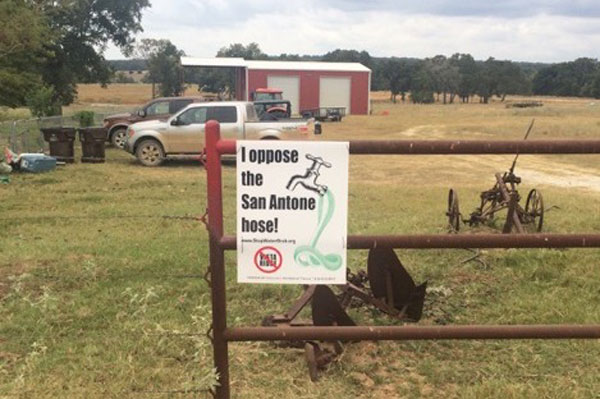- South Texas Students Meet Accordion Music Icons Los Tigres Del Norte In Edinburg Thanks To Khs America/Hohner Alianza Académica Initiative
- Fragile Planet Offers a Nighttime Wildlife Experience
- Falcons Soccer Off & Running
- Cameron County Receives Funds to Improve Two Parks
- Falcons Complete First Half of 32-6A
- School District to Help out Victims of California Wildfires
- Sand Castle Days Continued Despite Unexpected Weather
- Ready for District
- Discussion of Garbage Dumpster Rates, Agreements Between State & City on Highway Regulations, and More
- 31st Annual Shrimp Cook-Off is Right Around the Corner
Environmental Groups Fight Proposed Texas Water Pipeline
- Updated: April 15, 2016
by Mark Richardson
AUSTIN, Texas – A coalition of environmental groups has filed a protest with the Texas Water Development Board over a request for more than $1 billion in low-interest state loans to build a controversial 142-mile water pipeline.
Clean Water Action, Environment Texas, Environmental Stewardship and Save Our Springs Alliance claim the Vista Ridge water pipeline is not eligible for public funds.
Lauren Ice, an attorney for Save Our Springs Alliance, says those who are developing the project need to have some skin in the game.
“We’re all opposed to the project in general but the idea that public-private partnership, the way it’s set up, the fact that they could then go after public funding for the project and that they’re going after conservation funding – is just an added insult on top of all the other problems that there are,” says Ice.

A landowner in Burleson County posts a sign opposing the Vista Ridge water pipeline project, which would pump billions of gallons from a local aquifer 142 miles to San Antonio. Photo: SOS Alliance
The pipeline is being developed by the San Antonio Water System and several private firms. When completed, it would deliver more than 16 billion gallons of groundwater from Burleson County in north central Texas to San Antonio every year.
Ice says the project’s backers have requested funding through a special state program called the SWIFT Fund, which was set up in 2013 to assist with water management strategies by public entities.
She says Vista Ridge backers, including the San Antonio Water System, are trying to get around the regulations by creating a shell company, the Central Texas Regional Water Supply Corporation, which is controlled by private interests.
“San Antonio has been such a leader in conservation and project would just reverse that course,” Ice says. “It would have them take way more water than they would need; it would force them to pay for water that they don’t need, and they even admit that they don’t need 50,000 acre-feet of water in 2020.”
The Texas Water Development Board’s April 11 agenda states that the agency did not include the Central Texas Regional Water Supply Corporation application in the current round of funding due to lack of information regarding its eligibility. The next round of funding is in 2017.
